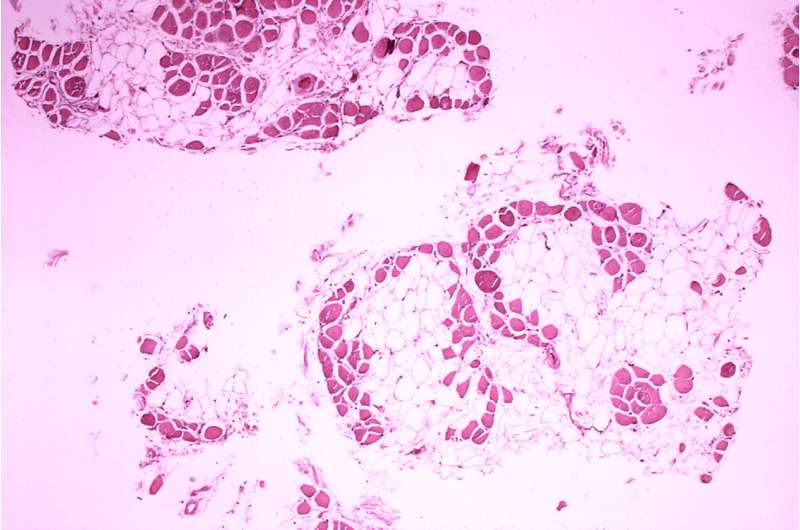This article has been reviewed according to Science X's editorial process and policies. Editors have highlighted the following attributes while ensuring the content's credibility:
fact-checked
peer-reviewed publication
trusted source
proofread
Could a novel small molecule slow or reverse the effects of Duchenne muscular dystrophy?

In a new study published in The FASEB Journal, investigators demonstrated the potential of a molecule that may help overcome some of the devastating symptoms of Duchenne muscular dystrophy (DMD), the most common life-limiting congenital neuromuscular disorder. The agent promotes the activity of AMP-activated protein kinase (AMPK), an important fuel-sensing enzyme that is present in all mammalian cells.
Previous research has shown that stimulating AMPK can mitigate the dystrophy—or wasting—of muscles, but AMPK activators have failed to reach the clinic due to either their lack of potency or toxic off-target effects.
In this latest work, scientists utilized a next generation oral AMPK agonist called MK-8722 and showed that when given as a single dose to mice with muscular dystrophy, it triggered signaling pathways associated with improved muscle health.
Additional studies are needed to test the chronic administration of such next-generation AMPK activators in dystrophic animals to further examine their safety and effectiveness.
"Our work highlights the therapeutic potential of this novel class of AMPK activators in DMD, as well as in other neuromuscular diseases," said lead author Sean Ng, MSc, Ph.D. candidate, of McMaster University, in Canada. "We hope that these findings can be extended to other novel AMPK agonists that are currently being investigated in ongoing clinical trials. If so, repositioning these therapies may pose as a cost-effective and efficacious method for the treatment of DMD regardless of the specific disease-causing mutation."
More information: Acute, next-generation AMPK activation initiates a disease-resistant gene expression program in dystrophic skeletal muscle, The FASEB Journal (2023). DOI: 10.1096/fj.202201846RR


















